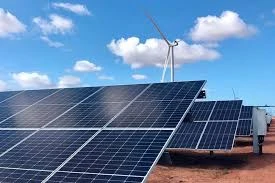solar panel string inverter vs micro inverter
When it comes to solar energy systems, choosing the right inverter is crucial for optimizing performance and efficiency. Among the popular options are string inverters and microinverters, each with its own set of advantages and disadvantages. Understanding their differences can help homeowners and businesses make informed decisions about their solar energy investments.
String inverters are the most widely used type of inverter in residential and commercial solar systems. They work by connecting multiple solar panels (usually in series) to a single inverter. One of the main advantages of string inverters is their cost-effectiveness. Because they require fewer components and less installation effort, string inverters tend to be more affordable both in terms of initial investment and maintenance costs. Additionally, they are generally reliable and have a long lifespan.
However, string inverters also come with some drawbacks. One significant limitation is their reliance on the weakest panel in the string. If one panel is shaded, damaged, or dirty, it can affect the performance of the entire string, leading to a decrease in overall energy production. This phenomenon is known as the dust bunny effect. As a result, homeowners with shaded roofs or concerns about panel performance might find string inverters less suitable.
solar panel string inverter vs micro inverter

On the other hand, microinverters are smaller units that are attached to each individual solar panel. This configuration allows each panel to operate independently, optimizing energy production regardless of shading or mismatched panel performance. The primary advantage of microinverters is their ability to maximize the output of each panel. In cases where panels face different orientations or experience variable shading throughout the day, microinverters can substantially increase overall system efficiency.
However, microinverters tend to be more expensive than string inverters. The cost per watt is typically higher due to the additional components and installation complexity. While they can offer better performance, especially in less-than-ideal conditions, the upfront investment may be a consideration for some homeowners.
In conclusion, the choice between string inverters and microinverters largely depends on individual circumstances and preferences. String inverters may be suitable for systems with uniform sun exposure and minimal shading, making them a popular choice for many standard solar installations. Conversely, microinverters are ideal for installations with shading issues, multiple roof orientations, or for those seeking to maximize energy production on each panel. By evaluating site-specific conditions and energy goals, homeowners can make the best choice to harness the power of the sun effectively.
-
String Solar Inverter: The High-Efficiency Solution for Smart Solar EnergyNewsJul.14,2025
-
Revolutionizing Rooftop Energy with the Power of the Micro Solar InverterNewsJul.14,2025
-
Power Independence with Smart Off Grid Solar Inverter SolutionsNewsJul.14,2025
-
On Grid Solar Inverter: Powering the Future with Smart Grid IntegrationNewsJul.14,2025
-
Monocrystalline Solar Panels: High-Efficiency Power for the Future of Clean EnergyNewsJul.14,2025
-
Bifacial Solar Panel: A Smarter Investment for Next-Generation Energy SystemsNewsJul.14,2025







